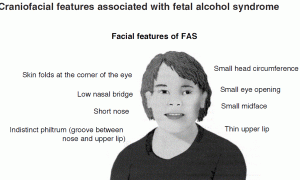
A pet allergy is triggered by an allergic reaction to proteins that are found in an animal’s saliva, skin cells or urine. The symptoms of a pet allergy most often include sneezing and runny nose. Some pet allergy sufferers may also experience asthma symptoms, like difficulty breathing and/or wheezing.
Pet allergies are most often triggered by the dead flakes of skin, or dander, that a pet sheds. Any animal that has fur can be the source of a pet allergy, but they are most commonly associated with pets like cats, dogs, horses and rodents.
The best approach to a pet allergy is to reduce or avoid exposure to the animal as much as possible. In some cases, over time, an immunity or resistance to the allergy can be built up and symptoms naturally reduce or resolve. Medications and other treatments can help to relieve pet allergy symptoms and manage more serious conditions like asthma.
Symptoms of Pet Allergies
The main signs and symptoms of pet allergies are related to inflammation of the nasal passages and can include:
• Itchy, red, watery eyes
• Sneezing
• Itchy nose, roof of the mouth or throat
• Nasal congestion
• Runny nose
• Cough
• Facial pressure and/or pain
• Post-nasal drip
More serious asthma-related symptoms can include:
• Chest tightness or pain
• Difficulty breathing
• An audible whistling or wheezing sound while breathing
• Trouble sleeping due to coughing, wheezing or shortness of breath
Skin issues can include:
• Allergic dermatitis, an immune system reaction that triggers skin inflammation
• Eczema
• Hives (raised, red patches of skin)
• Itchy skin
Complications
Ongoing and chronic tissue inflammation in nasal passages can obstruct the sinuses and make you more likely to develop sinusitis, a bacterial infection.
Asthma and asthma attacks are also a potential complication.
Causes of Pet Allergies
Allergies occur when the immune system reacts to a foreign substance.
For some people, pet dander causes an immune system response in the body, and the immune system then produces proteins called antibodies. These proteins help to protect the body from unwanted invaders.
With a pet allergy, the immune system has identified a substance from an animal as a threat, when it really isn’t.
Animals that Cause Allergies
• Cats and dogs produce potential allergens in the skin cells they shed (dander.) Allergens can also be released from saliva, sweat, urine and fur.
Dander is very small and often remains airborne for long periods of time. It’s collected easily in clothing and furniture. Pet saliva can adhere to bedding, carpets, furniture and clothes. Dry saliva can also become airborne.
• Rodents release allergens from hair, saliva, dander and urine. The dust from cage litter or sawdust can also contribute.
• Rabbit allergens are in their dander, hair and saliva.
Risk Factors
Pet allergies are very common, especially if there is a history of asthma in the family. Exposure to animals at a young age may result in a higher resistance to pet dander and allergens.
When to See a Doctor and How to Prepare for the Appointment?
Many symptoms of pet allergies are similar to those of a cold. However, if symptoms persist for more than a week, there might be an allergy at play.
Severe symptoms require medical attention. Emergency care is required if shortness of breath worsens rapidly.
You can prepare for a medical appointment about pet allergies in the following ways:
• Ask your doctor if you should cease any medications like antihistamines before your appointment.
• Document any and all symptoms you’re experiencing.
• Write down your family history, including allergies, asthma and any other specific conditions.
• Make a list of the medications you’re taking, including vitamins and supplements.
Also, prepare a list of questions you’d like the answers to. Some suggestions include:
• What is causing my symptoms?
• Do I need allergy tests?
• Should I see a specialist?
• I have other health conditions. How should I manage them with my allergies?
• Can I keep my pet?
• What changes should I make?
• Are there generic alternatives to any medicines prescribed?
• Can you recommend any other resources?
What to Expect from a Doctor’s Appointment
Your doctor is likely to ask:
• When did you first begin experiencing symptoms?
• Are they worse at certain times of the day or in certain locations? Do your pets frequent those locations?
• Have you made use of any self-care that helped?
• Does anything worsen the symptoms?
What You Can Do
Take steps to reduce your exposure to pet allergens. Keep pets off the furniture and out of the bedroom. Wash hands immediately after touching or petting your pets.
Tests
Testing will include an examination of the nose as well as a series of questions. If you have a pet allergy, the nasal passage lining will appear swollen, pale or have a bluish tint. You may also receive an allergy skin test and/or be referred to an allergy specialist.
During the test, very small amounts of purified allergens are pricked into your skin’s surface on your back or forearm to see what substances you are allergic to. You’ll develop a red, itchy bump where substances that trigger you have been pricked. If for some reason a skin test can’t be performed, a blood test can screen your blood for allergy-causing antibodies.
Treatments
The first line of defense is avoiding the allergy-causing pet and minimizing exposure to their allergens. While your reactions will be less severe, they likely won’t be eliminated if you keep your pet. However, over time, your symptoms may lessen as your immune system builds up a tolerance to their particular type of dander.
Medications that can help control symptoms include:
• Antihistamines
• Allergy medications
• Decongestants
Consult with your doctor about the best course of action when it comes to allergy medications.
Alternative Treatments:
• Cromolyn sodium
• Immunotherapy
• Nasal irrigation with a saline rinse
Lifestyle changes that can help if you wish to keep your pet:
• Clean your home more frequently
• Replace upholstered furniture with smooth leather or vinyl
• Remove carpeting and opt for wood, tile or vinyl flooring instead
• Wash bedding frequently
• Use high-efficiency HEPA filters.
• Bathe your pet frequently
• Make your bedroom a pet-free zone
• If your climate allows, keep your pet outside for at least part of the day
Additional Resources
Following are additional resources on pet allergies.
1) Pet Allergy – American Academy of Allergy, Asthma and Immunology:
2) Pet Allergies No Deterrent for Determined Owners – The Wall Street Journal:
3) How to Relieve Pet Allergies – How Stuff Works:
4) How Ordinary Folks Deal with Pet Allergies – Pet MD:
Have you or a loved one faced pet allergies? Share your experience and tips with us in the comments.




Leave a comment
You must login or register to add a new comment.